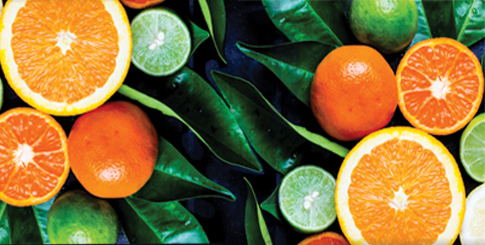The California citrus industry brings in over $2 billion annually and accounts for 22,000 jobs.
Although cultivation can be found throughout the state, most production comes from Tulare, Kern, Ventura, Riverside, and San Diego counties, with fruit available most of the year.
It all began centuries ago with Spanish explorers from Mexico who planted lemon and orange trees—which William Wolfskill then used to establish the first commercial citrus grove in present-day Los Angeles.
Eliza and Luther Tibbets of Riverside are credited with the next phase: planting a Brazilian orange variety with a distinctive ‘navel.’ The fruit took well to the climate, was seedless, exceptionally sweet, and ripened in winter. The rest, as they say, is history and today.
Weather Conditions and Flavor
Citrus trees were minimally impacted by California’s drought, due to highly developed irrigation systems. Though most predict a smaller crop than last year, the 2017-18 season should bring in around 70 million cartons.
Heather Mulholland, COO of Mulholland Citrus in Orange Grove, says many existing orchards were at their peak last season. There were also many “new plantings in the last few years and those trees are starting to bear.” Pricing, too, has been favorable. “We’re especially optimistic about prices in the mandarin category.”
“This year may be 10 percent lighter on navels, but with lighter volume you get bigger size,” shares Jeff Olsen, president of Chuck Olsen Company in Visalia. “Fluctuations in temperature makes the trees work harder and more nutrients get to the fruit, creating a higher sugar content.”
“Size is impacted by water,” adds Joan Wickham, director of advertising and public relations at Sunkist Growers cooperative in Valencia. “As for taste—weather, soil, and California’s ideal climate of warm days and cool nights all contribute to achieving that perfect balance of sweet and tart.”
Pablo Mercado, Sr., sales director for Citrus Plus, Inc., echoes Wickham’s thoughts, taking it a step further. “Less water means a higher concentration of sugars, though the fruit may not look as good,” he explains. “Big retailers care more about the cosmetic quality of fruit because consumers are willing to pay more. It’s kind of a tradeoff—good looks versus sweetness.”
Domestic Sales
Florida’s challenges have proven beneficial to California producers. Joel Nelsen is president and CEO of the Exeter-based California Citrus Mutual, which represents over 2,500 citrus growers. “California supplies 85 percent of the nation’s fresh citrus; on average, even without citrus greening and hurricanes, we were number-one in fresh orange production for the last 40 years or so. Florida produces fruit for juice; we mostly compete with ourselves in the fresh market, although citrus from Spain and other Mediterranean countries can affect our efforts.”



